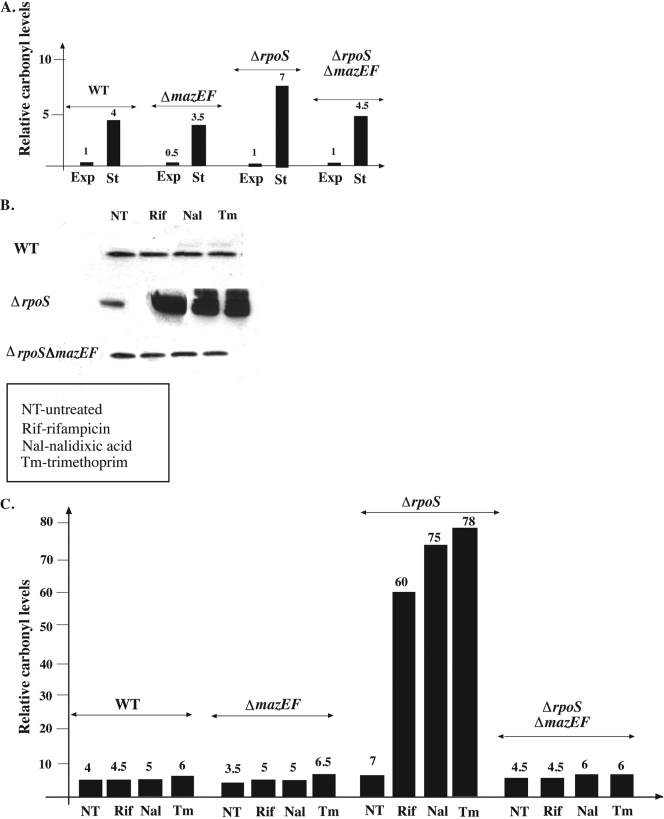FIG. 4.
mazEF-mediated carbonylation of cellular protein during stationary growth following the induction of mazEF by various stressful conditions. MC4100relA+ (WT) and its derivatives MC4100relA+ΔmazEF (ΔmazEF), MC4100relA+ΔrpoS::tet (ΔrpoS), and MC4100relA+ΔrpoSΔmazEF (ΔrpoS ΔmazEF) were grown to either exponential or stationary phase. Stressful conditions were induced as described in the legends to Fig. 1 and 2. Cells that were either not treated or treated under stressful conditions were lysed as we have described previously (15). In these lysates, we examined the level of protein carbonylation using the Chemicon OxyBlot kit to derivatize the carbonyl groups in the protein side chains to 2,4-dinitrophenylhydrazone (DNP-hydrazone) by reaction with 2,4-dinitrophenylhydrazine. The DNP-derivative crude proteins were detected using a primary antibody specific to the DNP moiety of the proteins (for details, see reference 15). (A) Relative protein carbonylation of untreated exponential-phase cultures (Exp) and untreated stationary-phase cultures (St). Protein carbonylation was determined and quantified, as we have described previously (15). The first column represents the carbonyl level of untreated exponential-phase WT cells, which was arbitrarily determined to be 1. The subsequent columns represent the relative carbonyl level of each strain compared with the levels of the exponential-phase untreated WT cells. (B) Protein carbonylation of stationary-phase cultures submitted to various stressful conditions. Carbonylated proteins were detected. (C) Relative carbonyl levels presented in panel B. The intensity of each band presented in panel B was quantified, as we have described previously (15). The columns represent the relative carbonyl level of each of the treated strains compared with the level in untreated, exponentially growing WT cells (first column in panel A).

